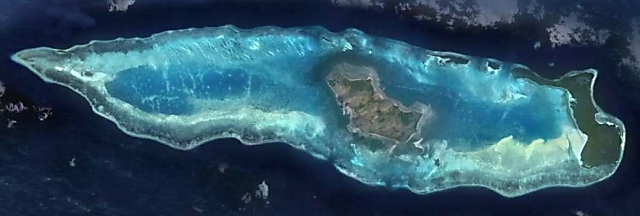LuangThe Luang Islands consist of forested Sermata, the largest of the group; tiny Luang, looking like a moonscape on the ground, but from the air resembling an agate as it lies surrounded by reefs and shallow waters; and flat, uninhabited Kelapa. The islands are situated between the Babars and the Letis, and share many of the cultural traits of their neighbours. Curiously, diminutive and largely barren Luang, which has only two villages, has traditionally served as the cultural centre of the Luang and Leti archipelagoes. The region's way-of-life, referred to as its 'umbilical cord' (see Van Engelenhoven), connects it to Luang though tales of ancestry and immigration. The island has a fairly busy port and has long been the region's chief trading hub. Much of the economy is based on fishing, but Luang, curiously, also has a history of making ikat sarongs for 'export' to neighbouring islands, a practice it only shares with Ndao where some cloths are made for Roti. Nowadays many of the island's men work abroad in the oil and mining industries. Their remittances are essential for the island's economic survival. As in many parts of the Indonesian archipelago, headhunting used to be a vital aspect of the island's culture, again, as elsewhere seen as the quintessential token of virility - required to make a man eligible for marriage. De Jonge: "The idea that a man must have killed in order to create new life was also visible during the porka festival. The 'celebration' of the cosmic marriage, namely, went hand in hand with a headhunt carried out in the name of the deity. If successful, as a great hunter he could marry. Heads captured by the warriors were ceremonially brought into the community and these hunting trophies were presented as the source of new life. On Luang, for example, during this festival, a woman pressed the heads to her breast as if they were babies." |



